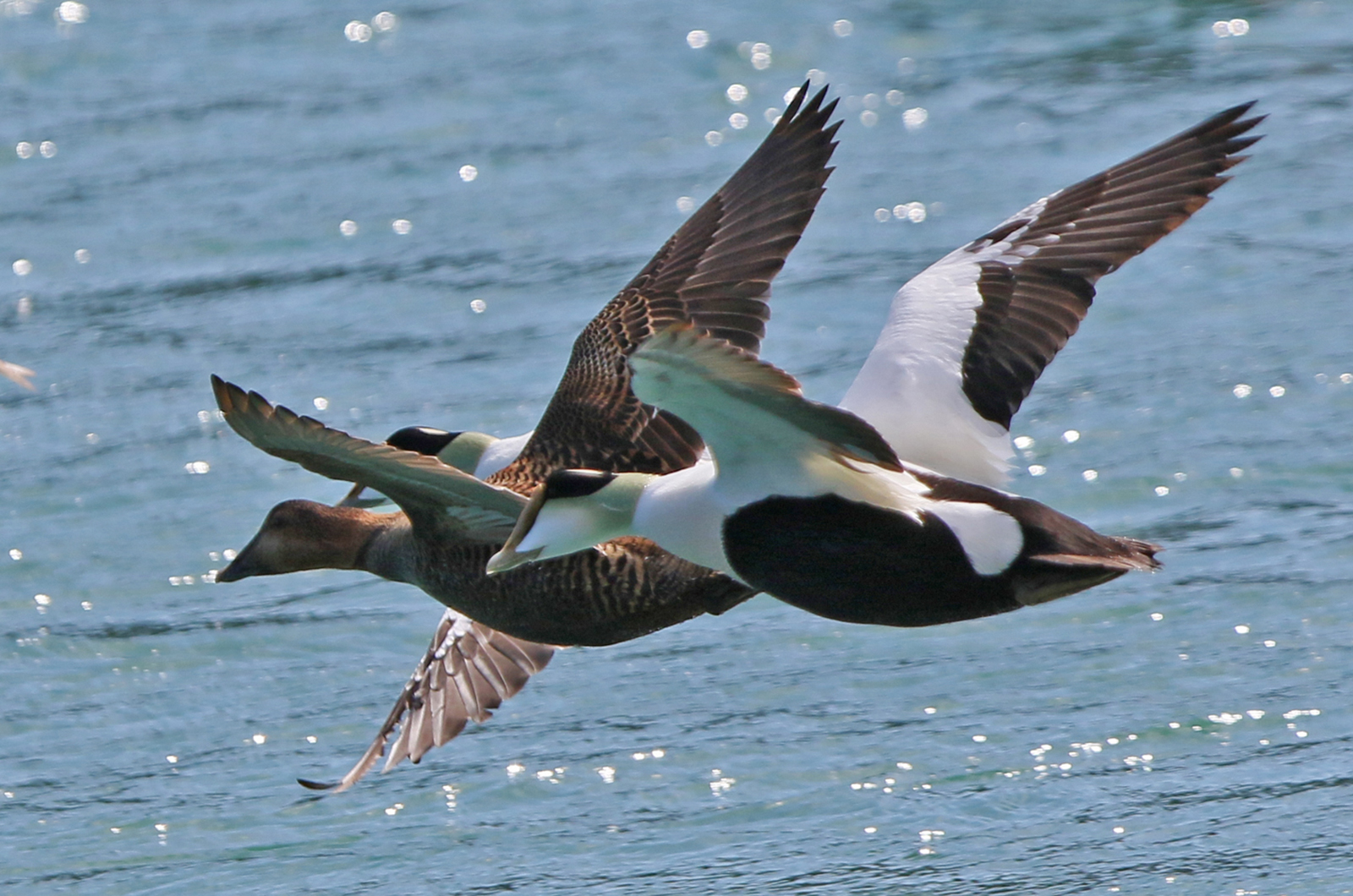The brant are still hanging out at Ocean Park and other nearby locales. They will be here for maybe another four to six weeks before heading north to their breeding grounds on the shores of the Arctic Ocean, from Alaska to Greenland. But where along that extensive shoreline?
On March 15 Scott Bliss photographed a color-banded brant. Reading the letters on the bands could at least tell us where it was banded, but all the numbers or letters could not be read. Unfortunately, I have not seen the bird despite repeated searches, so I am asking for your help. On the right leg is a red band with numbers on it and on the left leg is a white band above a light-blue band with yellow letters/numbers.
Another question is where our winter resident fish crows are from. We have a small year-round population that has nested in Oak Bluffs for at least two years but most of the fish crows will be leaving within the month. They are still here: Nancy Nordin spotted 28 on March 19 at the opening into Lake Tashmoo, as they were moving toward their winter roost. The species breeds along the Atlantic Coast up into Maine, and up the Connecticut and Hudson rivers. We do not have any clues about where “our” birds nest.
More ospreys have returned. Bob Shriber spotted one on March 22 along Wades Cove. On March 25 Danguole Budris saw one on Tiah’s Cove, and the MV Bird Club found one at Tashmoo Springs. On March 26 Nancy Nordin observed one at Lake Tashmoo while Nancy Weaver, Shea Fee and I independently saw one at the Oak Bluffs pumping station.
There are other hawks around too. On March 20, Lisa Maxfield spotted the sharp-shinned hawk that is lingering around Brush Pond, and on March 26 Chris Scott found one at Felix Neck. A northern harrier has been hunting State Beach recently; Chris Scott observed one on March 13, Sharon Simonin saw one on March 23, and Susan Wilson has seen them there regularly. And red-tailed hawks are now quite prominent as they noisily screech while flying overhead over most of the Island.
On March 26, Bob Shriber and Lanny McDowell spotted a flock of 2,500 common eiders streaming past Wasque Point, and they also spotted a black-legged kittiwake and 140 northern gannets. This is the most recent of several reports of large numbers of eiders, those stocky sea ducks. I find this encouraging: it has been years since we had large numbers of eiders visiting our shores. My best guess is that these birds are either from offshore or further south, and are now heading northward back to their nesting grounds.
In other waterfowl news, Lisa Maxfield reports that Brush Pond continues to host a lingering pair of gadwall, most recently seen on March 26. She also notes a pair of gadwall hanging around Crystal Lake as of March 18. The Martha’s Vineyard Bird Club found three gadwalls at Tashmoo Springs on March 25. Maybe, maybe they will nest at one of those locations.
A male northern pintail is also hanging out at Brush Pond as of March 27. Sharon Simonin found a lingering flock of ring-necked ducks on Crystal Lake on March 23; they have been there most of the winter. Also lingering are the six lesser scaup that have been seen in the southeastern cove of Squibnocket Pond; most recently, they were observed by Nancy Nordin on March 24.
Sharon Simonin saw the lingering American coot on March 23 at the Oak Bluffs pumping station. A close relative of the coot is the Virginia rail; Bob Shriber found one on March 23 along Moshup Trail, and both Bob Shriber and Nancy Nordin saw one on March 27. Was it the same bird?
Chris Scott found a horned grebe in Menemsha harbor on March 22. Shea Fee spotted a flock of seven snow buntings on March 19 at Little Beach. Both are winter residents that soon will be departing for their more northern breeding grounds.
It has been a while since I wrote about eastern towhees and gray catbirds. Both species are around in small numbers, as they attempt to survive our winters. Apparently they have succeeded in doing that; yes, I am tempting fate that there will be no more winter storms. Catbirds were seen by Nancy Nordin on March 20 at the Tashmoo Springs amphitheater, Holly Mercier on March 23 at her feeders and Ned Casey had one at his feeder for the four days leading up to March 23. The Martha’s Vineyard Bird Club saw an eastern towhee on March 25 at Tashmoo Springs. Catbirds typically start to arrive in early to mid-April, while towhees typically arrive in late April.
American robins are year-round residents — but this statement is deceiving as we have breeding robins from spring through fall who sing and hop around our grassy yards. We also have a different, more northern population of robins in the winter that tend to be in medium to large flocks that hang around sources of berries including winterberry, holly trees and crabapple trees.
Northward migrants start showing up in March. Since March 20 I have had two robins hopping around my yard and I first heard them singing on March 25. Just to make things confusing, however, I also heard a flock of robins singing from a dense shrub thicket in Ithaca, N.Y. on March 12.
Finally, on March 13 Karen English spotted a male ring-necked pheasant on Chelsea Hill Road in Vineyard Haven. A native relative of the pheasant is the northern bobwhite; Nelson Smith saw one along the bike path in West Tisbury on March 26.
Please email your sightings to birds@vineyardgazette.com.
Robert Culbert is an ecological consultant with Nature Watch LLC, living in Vineyard Haven.









Comments (1)
Comments
Comment policy »